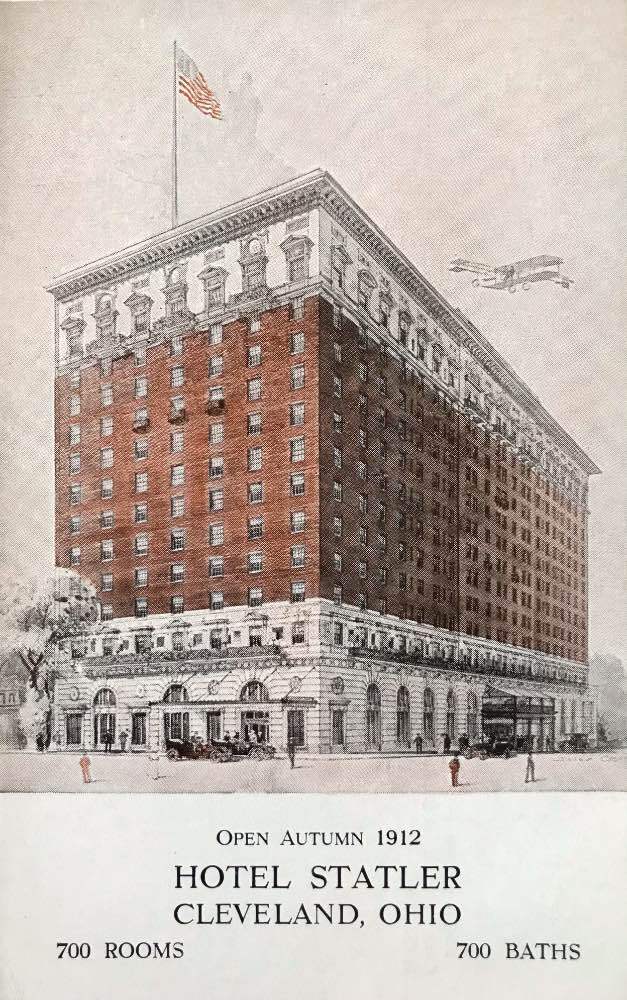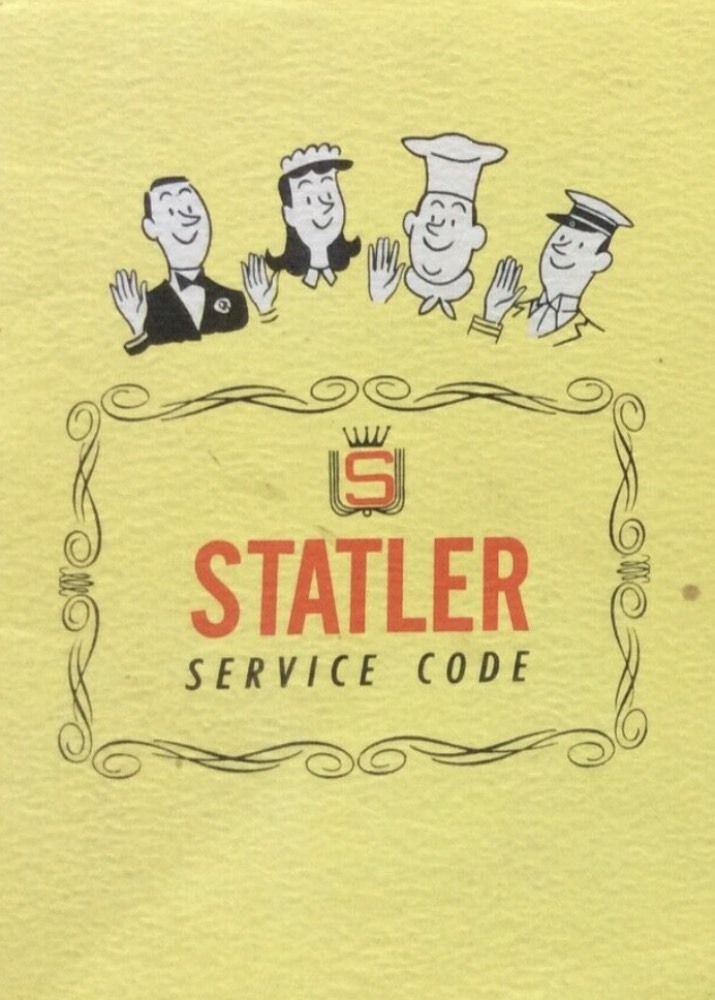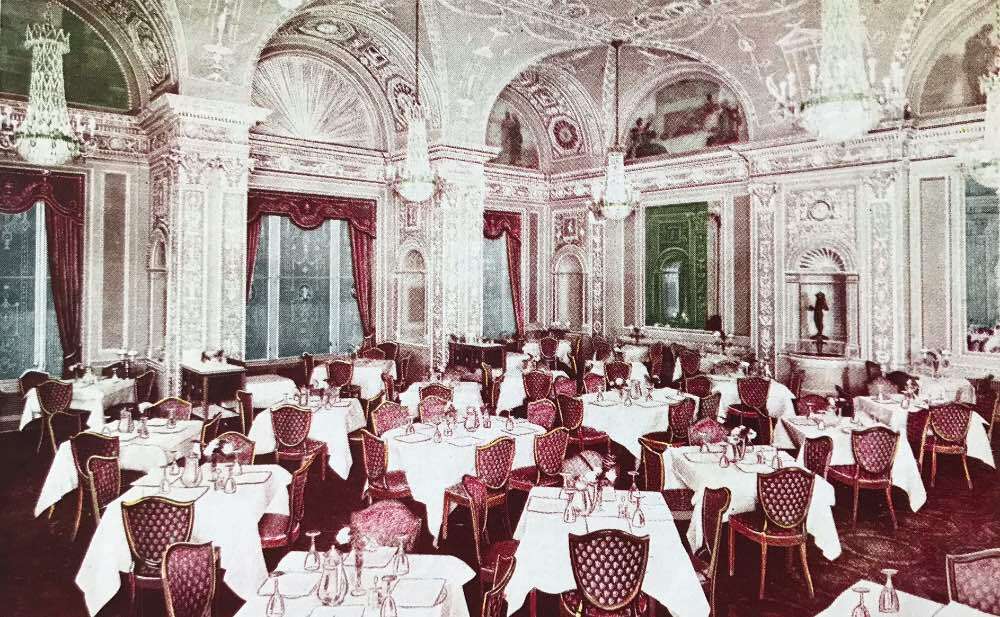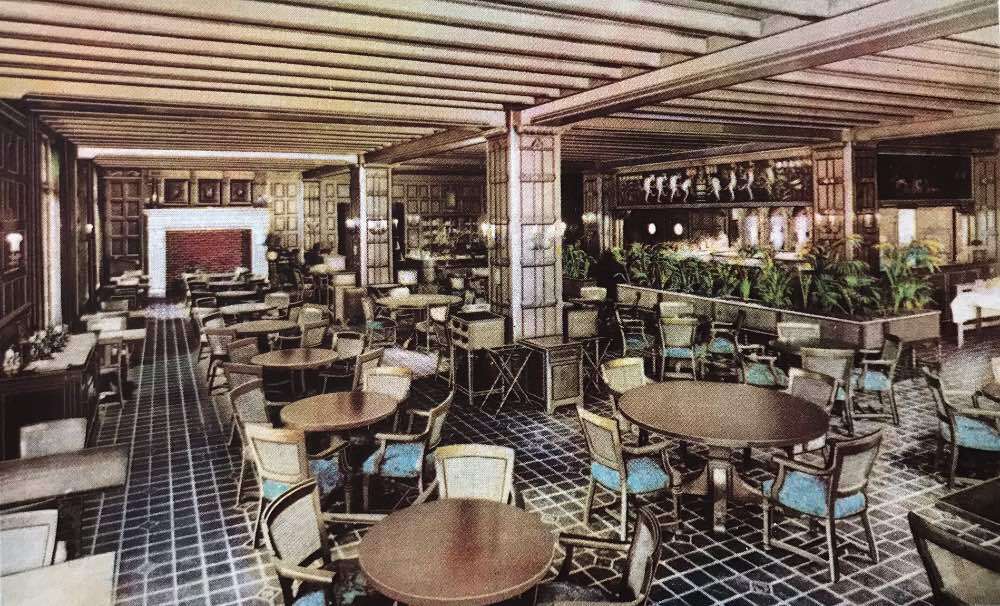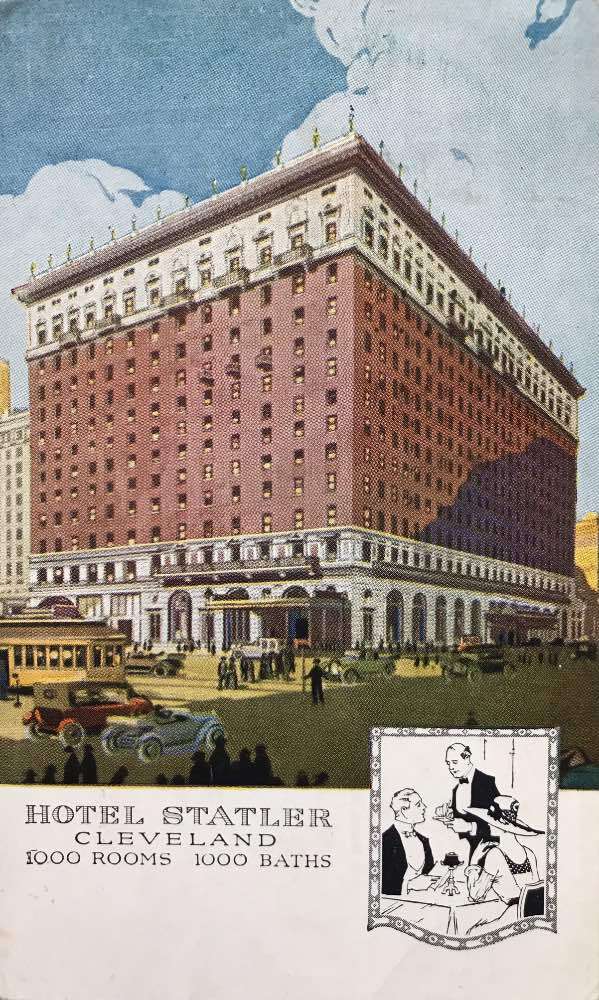Hotel Statler
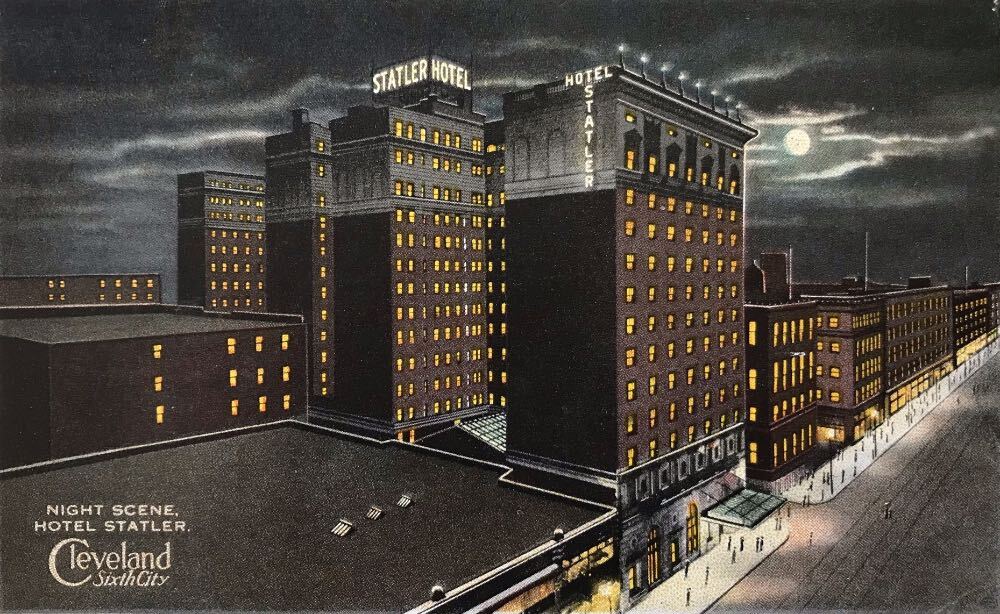
Ellsworth Milton Statler masterfully crafted a luxurious hotel experience in downtown Cleveland. Thanks to his fine attention to detail, creative touch, and modern amenities for the time period, the Statler exuded grandeur and excelled in service.
When the Hotel Statler opened in October 1912, it quickly established itself as the ultimate place for visitors to stay and for Clevelanders to see and be seen. Impressive architecture, modern amenities, and attention to detail made the Statler a modern-day work of art. Not only was the hotel impressive from an architectural standpoint, the hotel’s founder and namesake pioneered effective hotel techniques. While the Statler’s Service Code for employees is still noteworthy today, the hotel company also forged a symbiotic relationship with guests and created a code of conduct for them as well.
The Statler owes its creation to Ellsworth M. Statler, “a plain, rugged self-made man who started to work at the age of nine” and built himself into a premier hotelier and businessman. He was a quick study of hotel operations, working his way up from bellboy to hotel manager by the age of nineteen. Statler spearheaded a number of ventures, some successful, some not, but in 1907 he realized his dream to own a hotel. Statler’s first hotel opened in Buffalo, New York, and was the launching pad for his chain of hotels. While Statler’s main focus was to establish hotels for the middle class, he also focused on setting high standards in both design and service standards.
The 14-story, 700-room Hotel Statler was an enormous task to construct under the best of circumstances. Making it even more difficult, the contractor had about fourteen months from start to finish and a firm budget not to exceed $1,750,000, complete with all the furnishings and fixtures in the hotel. There was also an eye to the safety of the structure, with the design of the hotel ensuring that the building was completely fireproofed. While the budget may have been firm, Statler paid attention to detail and was unwilling to skimp on luxurious features.
Statler planned every detail of this hotel to exude luxury and opulence. The exterior of the hotel boasts wire-cut red brick, granite and limestone. Designed by the architecture firm of George B. Post & Sons, the Statler was patterned after the Adams period of architecture while incorporating details of both the English renaissance and Italian lines. The Adams period of architecture is characterized by lots of detailed ornamental work and was balanced and symmetrical. The combination of these three styles created an impressive exterior of the hotel. The Statler, while impressive, soon typified hotel architecture. Looking from the outside, it could very well be another hotel, but for the name on the outside. Hotel Cleveland, built in 1918, had similar exterior features, with the exception of the red brick. However, the Statler was just as impressive on the inside.
As you entered the hotel and walk into the grand lobby, your eyes would be drawn to the expansive ceilings and long marble halls. You could not have helped but be impressed. “Indeed one of the architects glowingly exclaimed that he considered it one of the finest ceilings in the world.” The lobby was not to be outdone by the nine murals throughout the hotel. But the luxury of this hotel did not stop at the lobby. E. M. Statler wanted all of his guests to be impressed from start to finish in his hotel. Built into the specifications of the hotel, there was thermostatic control for the temperature of each of the guest rooms, so that each guest could set it at their own optimal temperature. A private bathroom was built for every room, complete with a hot and cold mixing of water for the bath and shower.
The attention to detail also showed in the furnishing of the guest rooms. These varied in layout and styles with coordinating furniture and linens, giving a welcoming, homey feel. Some rooms had fireplaces, but all rooms had comfortable chairs and sofas. Each room had a signature embroidered pillow matching the theme of the room and coordinating pincushions embroidered with the Statler logo, complete with black and white thread, and an assortment of needles were placed each room in case there needed to be an emergency stitch job. If you lost a button, not to worry, the hotel stocked a variety of buttons. There was also a pen with the Statler logo and stationery in each room, generally located beside the telephone on the desk. These personal touches, which were trailblazing in the early 1900s and considered luxury items, are now standard fare in most hotels.
These luxuries extended well beyond the confines of the Statler guest rooms. Statler had installed fire and burglar-proof vaults and safes. The locks were considered non-pickable, and were similar to safety deposit boxes in banks, requiring two keys to open. This gave Statler guests peace of mind for their valuables while traveling in Cleveland. Statler also had purchased two thousand books for the use of guests, stocked in the library, but guests could request volumes brought to their rooms for their personal use and to help pass the time if they were caught waiting for the next train.
E. M. Statler’s high standards that brandished both quality and opulence throughout his hotels, and combined with his Service Code for employees, ensured that the newly constructed Hotel Statler was the place to be and be seen. For decades after the doors were opened, the Statler took its rightful place in the hotel industry and rapidly became a regular in the society columns of Cleveland, boasting charity events and society weddings. The Statler had all of the glitz and glamour from these spectacular events, and they had the ability to host large social events with banquet room capacity seating between 1,200 and 1,300 diners. This space could easily be converted to a grandiose ballroom that could accommodate even the largest of society events.
The Statler seemed destined to be great from the moment that the first shovel hit the ground. Every detail was carefully considered, from its style and design to its exceptional customer service. Statler wanted all of his guests to feel welcome and want to return. While many of the Statler features were similar to other hotels, the total experience was not easily matched. Statler and his chain of hotels are still the standard for service today. After expanding to 1,000 rooms in 1930 and becoming part of the Hilton chain from 1954 to 1971, the Statler underwent four overhauls – twice as an office building and twice as apartments – but in spite of the changes, the architecture and opulence of this building and its rich history still shine through.
Images

